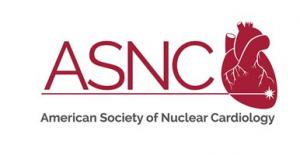New International Guideline Provides Expert Guidance for PET Imaging of Patients with Coronary Artery Disease
This new clinical guideline is intended to assist practitioners in the optimal application of 18F-flurpiridaz PET for MPI.
FAIRFAX, VA, UNITED STATES, September 18, 2025 /EINPresswire.com/ -- The American Society of Nuclear Cardiology (ASNC), Society of Nuclear Medicine and Molecular Imaging (SNMMI), European Association of Nuclear Medicine (EANM), and American College of Nuclear Medicine (ACNM) have issued a new clinical guideline for 18F-flurpiridaz PET myocardial perfusion imaging (MPI) and blood flow quantitation. The guideline, co-published in the Journal of Nuclear Cardiology and The Journal of Nuclear Medicine, is intended to assist nuclear cardiology practitioners in the optimal application of 18F-flurpiridaz PET for MPI, including recommendations for patient selection, imaging protocols, and interpretation of results.
Coronary artery disease (CAD) is the leading cause of death worldwide and is responsible for the hospitalization, functional decline, and reduced quality of life for millions of patients each year. Early and accurate diagnosis and risk stratification of CAD are essential for guiding treatment and improving patient outcomes. MPI is a cornerstone of non-invasive assessment of myocardial ischemia.
MPI can be performed with SPECT or PET. 18F-flurpiridaz is a novel PET radiotracer that has demonstrated favorable imaging and physiological properties compared to conventional SPECT agents. Clinical studies have shown that it provides superior image quality, improved diagnostic accuracy, and greater sensitivity in detecting clinically significant coronary artery stenosis compared with conventional SPECT agents. It is particularly valuable in patients for whom SPECT may be less effective, such as those with obesity or small left ventricles.
“Multiple phase II and two phase III clinical trials have further established the utility of 18F-flurpiridaz as a valuable PET radiotracer for the non-invasive evaluation of CAD,” noted René R. Sevag Packard, MD, PhD. “Owing to its favorable molecular imaging characteristics and extended half-life, 18F-flurpiridaz is poised to become a valuable agent for cardiac stress PET imaging, offering clinicians a robust tool for the evaluation of CAD.”
The guideline includes information on clinical indications, contraindications, and considerations for 18F-flurpiridaz PET. It addresses qualifications and responsibilities of personnel performing cardiac stress testing using 18F-flurpiridaz, protocol (and potential protocol modifications), biodistribution and dosimetry, and the 18F-flurpiridaz PET workflow. Technologist considerations are also included.
“This document is designed to promote high-quality, safe, and effective nuclear medicine practice in the evaluation of CAD,” emphasized the authors. “Our hope is that the guideline enhances clinical decision-making, standardizes clinical practice, improves diagnostic accuracy, and optimizes resource utilization to ensure safety and improve patient outcomes.”
ASNC, SNMMI, EANM, and ACNM periodically define new procedure standards/practice guidelines for nuclear medicine practice to help advance the science of nuclear medicine and to deliver effective and safe medical care to patients. Each standard/guideline, representing a policy statement by these groups, undergoes a thorough consensus process in which it is subjected to extensive review.
The authors of “ASNC/SNMMI/EANM/ACNM Procedure Standard/Practice Guideline for 18F-Flurpiridaz PET Myocardial Perfusion Imaging and Blood Flow Quantitation” include René R. Sevag Packard, Division of Cardiology, Department of Medicine; Department of Physiology; California NanoSystems Institute; and David Geffen School of Medicine, UCLA, Los Angeles, California; Jamshid Maddahi, Division of Cardiology, Department of Medicine; Department of Molecular and Medical Pharmacology; and David Geffen School of Medicine, UCLA, Los Angeles, California; Matthieu Pelletier-Galarneau, Department of Medical Imaging, Montreal Heart Institute, University of Montreal, Quebec, Canada; Mouaz H. Al-Mallah, Houston Methodist DeBakey Heart & Vascular Center, Houston, Texas; Marta Coelho, Department of Nuclear Medicine, West German Cancer Center, University Hospital Essen and University of Duisburg–Essen, Essen, Germany; Sharmila Dorbala, Division of Nuclear Medicine and Molecular Imaging, Department of Radiology; Cardiovascular Imaging Program, Departments of Medicine and Radiology; and Brigham and Women’s Hospital, Harvard Medical School, Boston, Massachusetts; James Galt, Division of Nuclear Medicine and Molecular Imaging, Department of Radiology and Imaging Sciences, Emory University School of Medicine, Atlanta, Georgia; Mark Hyun, Department of Imaging and Cedars-Sinai Medical Center, Los Angeles, California; Nandakumar Menon, Department of Radiology, University of Wisconsin, Madison, Wisconsin; Edward J. Miller, Section of Cardiovascular Medicine, Department of Medicine, Yale University School of Medicine, New Haven, Connecticut; Mrinali Shetty, Division of Cardiovascular Medicine, Department of Medicine, University of Louisville School of Medicine, Louisville, Kentucky; and Antti Saraste, Heart Center and PET Centre, University of Turku and Turku University Hospital, Turku, Finland.
###
About the American Society of Nuclear Cardiology
The American Society of Nuclear Cardiology is the international home for nuclear cardiology and the largest professional society devoted exclusively to the field. ASNC’s membership includes more than 5,700 nuclear cardiology professionals from around the world. Founded in 1993, ASNC’s mission is to improve cardiovascular outcomes through image-guided patient management. ASNC establishes standards for excellence in cardiovascular imaging through the development of clinical guidelines, professional medical education, advocacy, and research. ASNC’s official publication is the Journal of Nuclear Cardiology. Learn more at http://www.asnc.org.
About the Society of Nuclear Medicine and Molecular Imaging
The Society of Nuclear Medicine and Molecular Imaging (SNMMI) is an international scientific and medical organization dedicated to advancing nuclear medicine, molecular imaging, and theranostics—precision medicine that allows diagnosis and treatment to be tailored to individual patients in order to achieve the best possible outcomes. For more information, visit snmmi.org.
Kathy David
American Society of Nuclear Cardiology (ASNC)
+1 717-422-1181
kdavid@asnc.org
Visit us on social media:
LinkedIn
Bluesky
Instagram
Facebook
YouTube
X
Legal Disclaimer:
EIN Presswire provides this news content "as is" without warranty of any kind. We do not accept any responsibility or liability for the accuracy, content, images, videos, licenses, completeness, legality, or reliability of the information contained in this article. If you have any complaints or copyright issues related to this article, kindly contact the author above.

